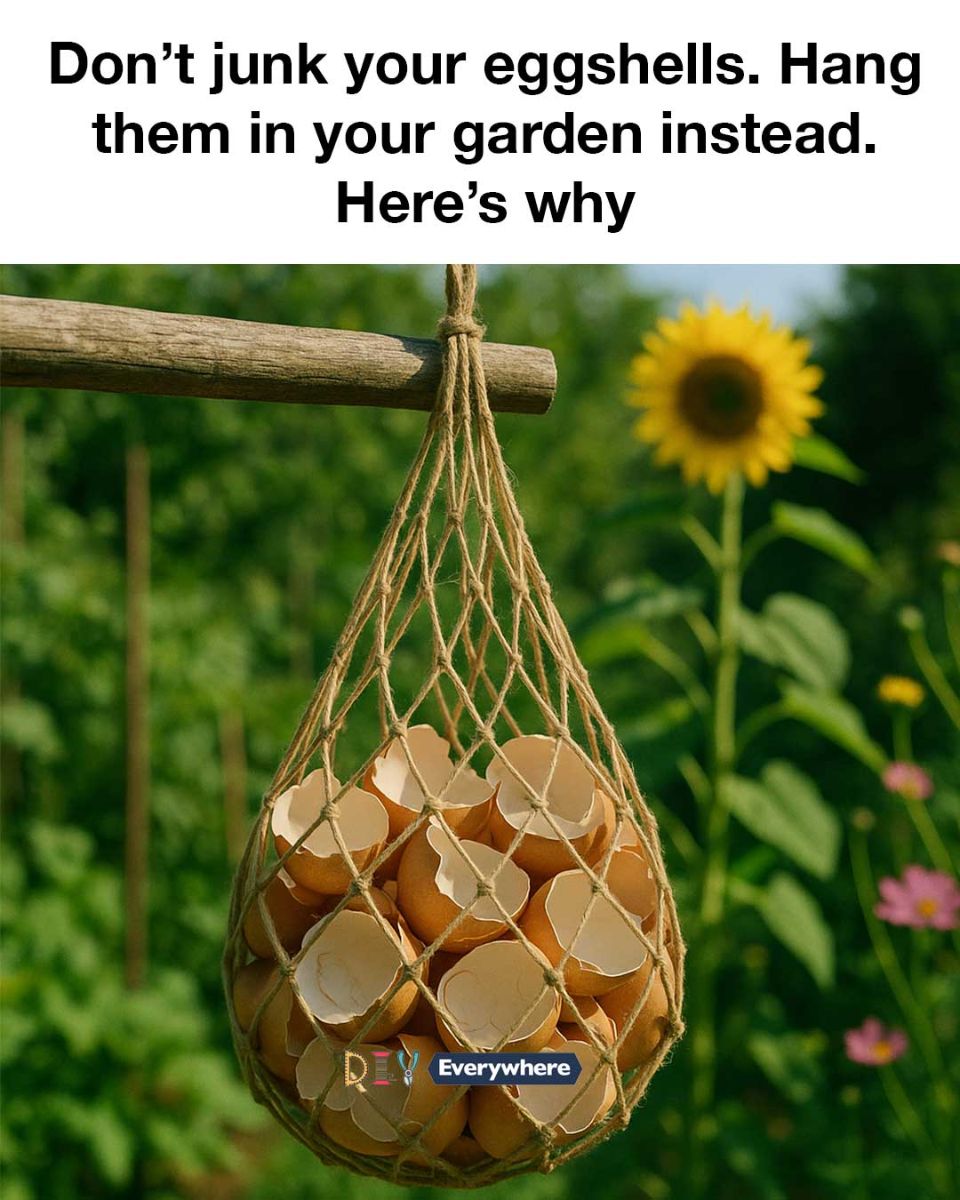In the quest for a thriving garden, many gardeners overlook a humble yet powerful ally: the eggshell. Often discarded as kitchen waste, eggshells are packed with nutrients and benefits that can transform your garden into a flourishing oasis. Instead of tossing them into the trash, consider hanging them in your garden to unlock their full potential.
Eggshells are more than just a source of calcium for your plants. They can improve soil structure, deter pests, and even contribute to composting efforts. By understanding the multifaceted benefits of eggshells, you can make a significant impact on your garden’s health and sustainability. Let’s explore why you should hang those eggshells in your garden and how to do it effectively.
1. The Nutritional Benefits of Eggshells for Plants
Eggshells are primarily composed of calcium carbonate, which is crucial for plant growth. Calcium helps build strong cell walls, ensuring that plants can withstand environmental stressors. A single eggshell contains approximately 2.2 grams of calcium, which can be slowly released into the soil as the shell breaks down.
In addition to calcium, eggshells contain small amounts of other essential nutrients like magnesium and phosphorus. These nutrients support various plant functions, from photosynthesis to root development. By incorporating eggshells into your garden, you provide a steady supply of these vital nutrients, promoting healthier and more robust plants.
2. How Eggshells Improve Soil Structure
Eggshells contribute to improving soil structure by enhancing aeration and drainage. When crushed and mixed into the soil, they create small air pockets that allow roots to breathe and water to flow more freely. This is particularly beneficial in heavy clay soils, which tend to compact and restrict root growth.
Furthermore, the gradual decomposition of eggshells adds organic matter to the soil, improving its overall texture and fertility. This process helps create a balanced environment where beneficial microbes can thrive, further enhancing soil health and plant growth.
3. Using Eggshells as a Natural Pest Deterrent
Eggshells can be an effective natural pest deterrent, especially against soft-bodied pests like slugs and snails. The sharp edges of crushed eggshells act as a physical barrier, deterring these pests from crossing into your garden beds. Simply scatter a layer of crushed eggshells around the base of vulnerable plants to protect them.
Additionally, the presence of eggshells can discourage other pests, such as cutworms, from damaging your plants. By using eggshells as a natural pest control method, you reduce the need for chemical pesticides, promoting a healthier garden ecosystem.
4. Eggshells as a Source of Calcium for Your Garden
Calcium is an essential nutrient that plays a vital role in plant development. It is particularly important for preventing blossom end rot in tomatoes, peppers, and other fruiting plants. By adding eggshells to your garden, you provide a natural and sustainable source of calcium.
To maximize the calcium benefits, crush the eggshells into a fine powder before adding them to the soil. This increases the surface area and speeds up the release of calcium, ensuring that your plants receive the nutrients they need in a timely manner.
5. The Role of Eggshells in Composting
Eggshells are an excellent addition to your compost pile, contributing valuable nutrients and helping to balance the carbon-to-nitrogen ratio. When composted, eggshells break down slowly, releasing calcium and other minerals into the compost.
To incorporate eggshells into your compost, rinse them thoroughly to remove any egg residue and crush them into small pieces. This accelerates the decomposition process and ensures that the nutrients are readily available for your garden when the compost is applied.
6. How to Prepare Eggshells for Garden Use
Before using eggshells in your garden, it’s important to prepare them properly to maximize their benefits. Start by rinsing the eggshells to remove any remaining egg whites or yolk, which can attract pests. Once clean, allow them to dry completely.
Next, crush the eggshells into small pieces or grind them into a fine powder using a mortar and pestle or a coffee grinder. This increases the surface area, allowing the nutrients to be released more efficiently into the soil. Store the prepared eggshells in a dry container until you’re ready to use them in your garden.
7. Creative Ways to Hang Eggshells in Your Garden
Next Page

